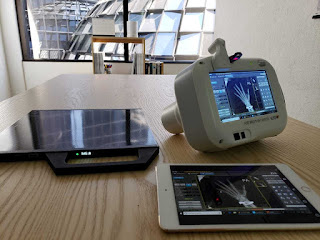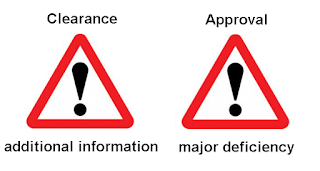Yesterday Nanox issued a press release and filed a 6-K about its premarket submission to the FDA for a device called Nanox.Arc. The press release contradicts numerous claims made by Nanox in the past, and contains at least one red herring.
510(k) means the device is not novel
Nanox had repeatedly claimed in the past that the Nanox.Arc device is novel. Here is another instance, not covered previously:
Nanox.ARC, in collaboration with its companion cloud-based software Nanox.Cloud, is a novel digital x-ray device intended to provide end-to-end medical imaging services ..., according to Nanox founder and CEO Ran Poliakine.
Here is another:
...to use the Nanox ARC system on site for developing novel early-detection and screening protocols to promote global preventive healthcare practices.
The problem is a that a novel device, by definition, cannot be cleared. Clearance aka pre-market submission aka 510(k) submission is simply a submission made to the FDA to demonstrate that the device to be marketed is as safe and effective, that is, substantially equivalent, to a legally marketed device (section 513(i)(1)(A) FD&C Act) - definitely not novel. The FDA explains:
Novel devices include those brought to market through the premarket approval (PMA), humanitarian device exemption (HDE), and De Novo pathways, as well as a subset of those that are brought to market with 510(k) clearance or Emergency Use Authorization (EUA). Of the thousands of 510(k) clearances every year, the FDA considers only those devices with a breakthrough designation to be novel. In addition, in 2020, we are including first-of-a-kind devices authorized under our EUA authority as novel devices. Novel or innovative does not simply mean “new.” They address an unmet need, or may be safer or more effective than currently available alternatives. For FDA-approved and FDA-cleared medical devices, innovation, and safety are two sides of the same coin.
Nanox has not requested a breakthrough device designation. The 510(k) submission therefore contradicts the claim that Nanox.Arc is novel.
510(k) confirms the RSNA 2020 demo was illegal
Nanox claims to have demonstrated Nanox.Arc version 2.0 at the "virtual" RSNA 2020 trade show last December. Today's press release confirms the device had no clearance pending at the time of the demo. This article explains:
A device that lacks FDA marketing clearance is considered "investigational," and therefore the company cannot promote, advertise or accept orders for it. The FDA considers such activities to be “commercialization of an unapproved device." The FDA does make some exceptions for trade shows, however,... [only if the device] is the subject of a pending 510(k) application. It cannot take orders or be prepared to take orders that might result in contracts for sale for the device unless limited to research or investigational use.”
So, since the submission was announced just yesterday, there was no clearance pending in December, which means the device was marketed illegally in December.
This can't be the first version of the "multi-source" Nanox.Arc
According to Nanox technology webpage, the first version of the multi-source Nanox.Arc looks like this:
That device is completely fake. It is has no x-ray tube, no x-ray detector, no ability to scan - in fact, it is just a mock-up plus an LED light and a battery. Version 1.5 on that webpage does not look less fake.
At RSNA 2020, Nanox CEO insisted that the design of the multi-source Nanox.Arc has been finalized (in its version 2) - he was just confused whether the device had 5 or 6 x-ray tubes:
The design was changed again in February 2021 - version 2.5? - and the device had no x-ray tubes or a detector.
We are excited to take this next step in our regulatory process as we move toward future versions of the multi-source Nanox.ARC, which will fulfill current and future contracts with service providers and collaboration agreements and allow us to achieve our global vision.
Nanox.ARC is a 3-D tomosynthesis imaging system that produces scans of a human body part.
Subject to receiving regulatory clearance, the first version of the multi-source Nanox.ARC that we expect to introduce to the market is expected to be a 3D tomosynthesis imaging system that produces a 3D reconstruction of the scanned human body part...
exists a significant unmet medical need globally for a more accessible and cost-effective medical imaging solution
Presumably, a tomosynthesis device like the proposed Nanox.Arc could meet that need. However, tomosynthesis is a failed modality, with possible exception of digital breast tomosynthesis (DBT), which Nanox.Arc cannot do due to its design. Tomosynthesis (also known as tomography, not to be confused with CT or computed tomography) has existed since the 1930s in one shape or another, but its share (DBT excluded) has been less than 1% of unit shipments of diagnostic x-ray devices in the United States and probably even less in the world (based on a preliminary and unpublished analysis of FDA's x-ray assembler data files). Yes, it is cheap (maybe 10-20% more expensive than plain old x-ray devices - sometimes just a software update is required), but from diagnostic point of view, it is not much better than taking two or three plain radiographs, and it cannot compete with the "gold standards" such as CT or other non-x-ray technologies.
Nanox.Arc is not designed for easy setup and operation
The press release states:
The system is being designed for easy setup and operation with multiple alternately-switched X-ray tubes arranged around the patient.
However, the RSNA 2020 demo revealed that the device requires an external high-voltage generator. Also, the annual report states that need for
potential customers to invest in the required safety infrastructure, including customary X-ray shielding, to allow the Nanox.ARC to be safety operated.
The device, as demoed at RSNA 2020, is slow. The scan of a simple "body part," a phantom hand, took about 45 seconds. Imagine holding your breath or lying completely still for 45 seconds to prevent image blurring.
The single-source Nanox.Arc transformed into Nanox.Cart
The press release reiterates:
Nanox received FDA clearance of its single source Nanox Cart X-Ray System in April 2021
But that April clearance was initially supposed to be for the single-source Nanox.Arc (Prospectus, Page 1). To this date, Nanox has never shown a picture or photo of the "Nanox Cart X-Ray System" anywhere.
Nanox has not developed a commercial-grade digital X-ray source
The press states that Nanox
is developing a commercial-grade digital X-ray source designed to be used in real-world medical imaging applications
In other words, it has not developed it yet. So what x-ray sources are used by Nanox.Arc, the one just submitted for clearance? All signs point to regular (but poorly crafted) hot-cathode x-ray tubes.
The press release never mentions any cold-cathode x-ray tubes. The cold cathode is supposedly the core Nanox innovation, but the CEO is apparently unware that x-rays were discovered in 1895 using a cold-cathode x-ray tube. and that tube was completely driven off the market by the invention of the hot-cathode tube in 1913 by GE.





























